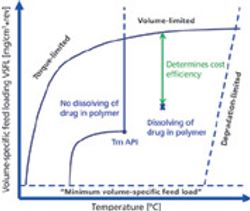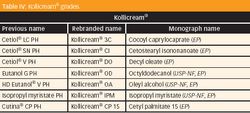Spray Drying of Amorphous Dispersions
Pharmaceutical Technology Europe
Spray drying is a key process for manufacturing amorphous dispersions because of its breadth of applicability. The wide range of potential atomization techniques and controllable drying kinetics enables amorphous spray-dried dispersions (SDDs) to be produced from a wide variety of active pharmaceutical ingredients (APIs).
Spray drying is a key process for manufacturing amorphous dispersions because of its breadth of applicability. The wide range of potential atomization techniques and controllable drying kinetics enables amorphous spray-dried dispersions (SDDs) to be produced from a wide variety of active pharmaceutical ingredients (APIs). Moreover, spray drying is a continuous, efficient, and well-characterized process that can be easily scaled up from development to pilot to production scale. The use of spray drying for pharmaceutical applications is important because amorphous dispersions are key delivery technologies for increasing the solubility of BCS Class II and IV drugs, which represent more than 50% of the compounds in pharmaceutical company pipelines.
Bend Research, a leader in the production of amorphous dispersions for pharmaceutical applications, has devoted a substantial amount of work to the application of fundamental engineering principles to the spray drying of amorphous dispersions. Application of fundamental knowledge has made it possible to obtain spray-dried amorphous dispersions with the desired stability and performance attributes, smooth process scale-up, and downstream manufacturability. An overview of the process and product is shown in Figure 1.
Figure 1: Spray drying process and key amorphous dispersion attributes.
Performance
The spray drying process is amenable to the manufacture of amorphous dispersions across a wide range of API physicochemical properties. Mechanistic understanding of the dissolution mechanism is critical during formulation selection. Dissolution of the primary solid dispersion particle to free drug or high-activity drug species is necessary to enchance the bioavailability of the amorphous solid.
To increase the efficiency and robustness of formulation selection, "guidance maps" are used that account for key API properties related to physical stability and performance. Drug loading and polymer selection can be efficiently optimized to achieve the desired performance attributes of the dispersion (1). The process space is then selected to provide a robust manufacturing window.
Stability
Physical stability during spray drying is maintained through the rapid drying kinetics of high-surface-area droplets. Rapid quenching of droplets to achieve a low mobility state, facilitated by use of a high-Tg polymer, is critical to achieving an amorphous dispersion. Atomization and drying conditions are both optimized to ensure a reproducible, robust process that achieves a molecular dispersion and promotes physical stability during in-process hold times.
Manufacture
The spray drying process is broadly applicable to a large number of APIs and formulation approaches. Multiple spray solvents can be successfully used, simplifying the formulation of many drug and polymer combinations.
Figure 2: Overview of droplet-to-particle history.
Fundamental understanding of the spray drying process requires definition of a control volume to identify the key physical situation. Mapping the process from droplet formation to particle formation, as shown in Figure 2, is critical to accurate prediction of the impact of process variables on final particle attributes. By matching the conditions encountered during the droplet-to-particle history, the critical-to-quality product attributes can be achieved, independent of process scale.
Figure 3: Process development flowchart.
A rational flowchart methodology based on this fundamental knowledge can be applied to optimize the spray drying process, focusing on two core processes: atomization and drying (see Figure 3) (2).
Numerous atomization techniques can be employed to manufacture specific particles sizes for applications such as oral solubilization (10 to 100 µm) and engineered particles for inhalation (1 to 5 µm). Engineering correlations are combined with an experimental approach. Experiments are conducted to select target droplet-size distributions through changes in atomizer geometry and operating conditions to achieve the target operating ranges and final particle size.
Drying conditions are selected based on physical-stability constraints and the desired morphology or density of particles. Process parameters are correlated to particle attributes, serving as a basis for scale-up.
Conclusions
Use of engineering fundamentals in the spray drying process for amorphous dispersions allows understanding of key process parameters and their impact on performance, manufacture, and stability. The process is easily scaled and is applicable to with a wide variety of APIs.
References
1. D.T. Friesen et al., Mol. Pharm. 5 (6), 903–1144 (2008).
2. D.E. Dobry et al., J. Pharm. Innov. 4 (3), 133–142 (2009).




